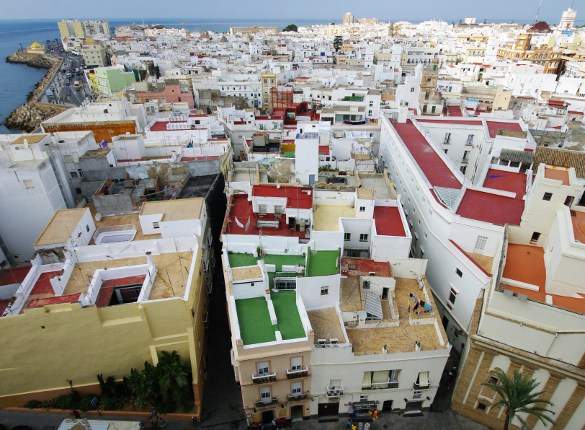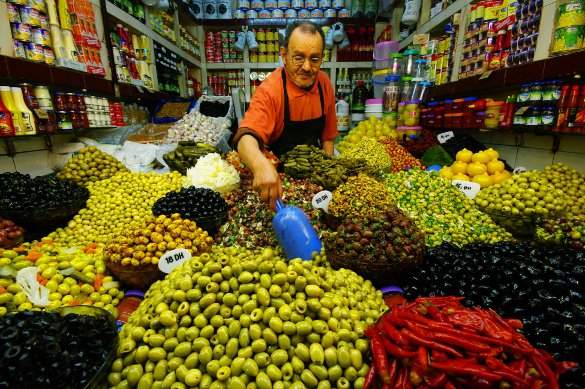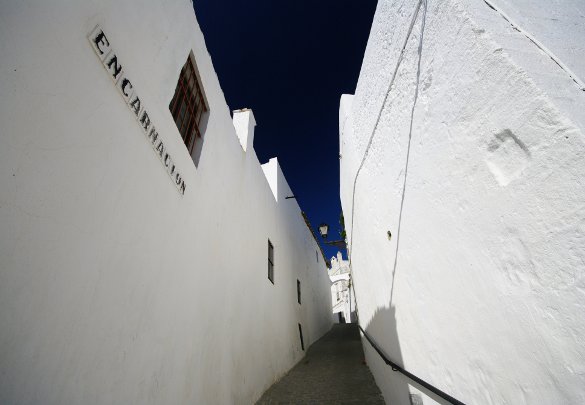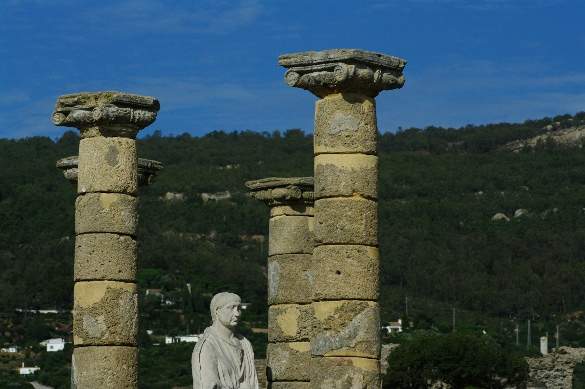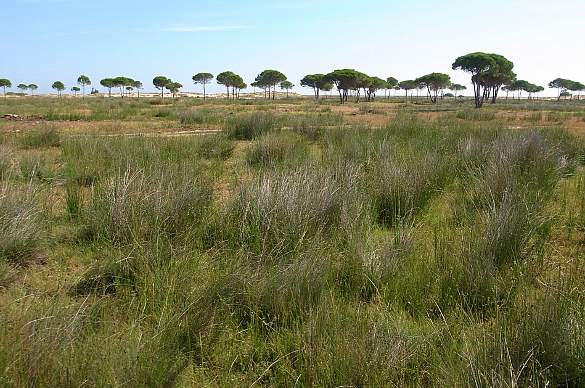The word “costa” alone will be enough to put many off, conjuring images of crazily crowded beaches, full English breakfasts and sandals with socks. The epitome of tourism, the antithesis of travel you might say, but bear with me; although we (foreigners) are still busy working on it, we haven’t ruined every inch of Spain’s coast, yet. One example at the country’s southern tip – stretching for a mere 100km or so between Tarifa and Cadiz on the Atlantic shoreline – is the Costa de la Luz in Cadiz province. There has been some development here but for the most part this little costa is wild and windswept. So why come? Here’s why:
Cadiz
Some will tell you that this is Europe’s (and the western world’s) oldest city. Others will tell you it isn’t, quite. Either way, it’s old. Columbus sailed from here on his second and fourth voyages. Built on a slender peninsula, Cadiz is reached by a single causeway over the water, lending it a magical and isolated air. If any city can claim to be handsome, it’s this one; its golden age was the 18th century and this is reflected in the architecture of its seemingly endless casco antiguo (old town), a network of winding lanes and wider boulevards.
With a historical pedigree that is second to none and monuments and archaeology galore, Cadiz should be added to your “before I die” list if it isn’t already on it, but if you need additional reasons to visit, try Carnaval in the spring when the whole city goes gaga for ten days and nights, or the Ruta del Tapeo in the summer when the city’s tapas bars – famed for their fish and seafood – compete for your approval.
Tangier
The more astute among you will be quick to point out that Tangier is not in fact on the Costa de la Luz, or indeed in Spain. Or Europe, for that matter. It still counts though – you can see this city for a few euros and a mere 35 minute ferry ride from Tarifa on the Costa’s southern tip. Ferries are every two hours including Sundays and day trips are popular.
Tangier has always been out there on its own – authenticity bores will line up to tell you how it isn’t particularly Moroccan. It isn’t particularly African either. It certainly isn’t European. This is the “Interzone” of William Burrough’s Naked Lunch, a hotbed of Cold War espionage and a long time hangout for artists and writers in the 19th and 20th centuries. The narrow streets of Spain’s pueblos blancos are precursed here in the altogether more dizzying and asymmetrical laneways and alleys of the old medina. It is both touristy and off the beaten track, irritating and lovable. Don’t be surprised if one or two of its residents express an interest in selling you something.
Vejer de la Frontera
Speaking of pueblos blancos, this province has its fair share of them, and Vejer is probably the most spectacular. Perched on a hillside half-way along the costa, it is easily driven past if you aren’t looking up, but if you are you will be presented with a spectacular and uniquely Andalucian scene – whitewashed walls built right into the cliffside of a steep hill, like the foam on a breaking wave.
Once up there you’ll find yourself in an antique maze of impossibly charming streets and squares. If you’re only ever going to see one pueblo blanco, make it Vejer. The town is visitor friendly with many menus printed in English and German (not usually the case along this costa) and shops catering to tourists and collectors. Accommodation is plentiful but La Casa del Califa would be hard to beat.
Jerez de la Frontera
The word “sherry” is a British mispronunciation of this town’s name – early visitors were unable to handle the guttural sound of the Spanish “J”. A short drive inland from Cadiz, this is the home of the famous fortified wine and one essential activity while here is to take a tour in one of Jerez’s bodegas – Tio Pepe, Harveys, or Sandeman to name just three. If you’re still in good condition afterwards the town offers any number of delightful bars and restaurants so you can continue to sample the local tipple with some quality tapas. It isn’t all about the sherry either – have you ever met a horse that could dance to flamenco? Well, they’re out there, and this beautiful city’s Horse Fair is the place to see them. The next fair is in May 2011.
Baelo Claudia
Spain isn’t short of a Roman ruin or two (the aquaduct at Segovia comes to mind) but Baelo Claudia, just over 20km outside Tarifa at the southern end of the Costa is the country’s most intact Roman town by far. As you approach through windswept National parkland the town – and the state of the art visitor centre for that matter – is bound to be more impressive than anything you were expecting. The town was a major port and a centre for the production of garum, a fish sauce that the Romans were crazy for and that we are probably better off without. Today’s ruins incorporate a well preserved and arcaded main street, a forum and temples to Isis, Juno, Jupiter and Minerva as well as baths and a market and it certainly doesn’t hurt that the whole thing is located on a spectacular stretch of coastline with views across the Straits to Africa.
National Parks
The Costa de la Luz is still overwhelmingly wild and vast tracts of it have been set aside as nature parks and reserves. The Doñana National Park, a UNESCO World Heritage Site, is situated on the Guadalquivir estuary and is one of Europe’s most important wetlands. The endangered Spanish Lynx and Adalbert’s eagle can be spotted here, if you’re lucky. Also in the area is the La Breña y Marismas del Barbate Natural Park which incorporates the sea cliffs at La Breña and Barbate’s salt marshes – a prime area for water fowl and other wildlife.
Tarifa
Enough of culture and history (although Tarifa has plenty of both) – the big draw of this costa for so many young Spanish and international dudes and dudettes is kitesurf. With a uniquely reliable supply of year round winds this is the kitesurf capital of the world, and if strapping your feet to a board, your body to a kite and hurling yourself off Europe’s windiest coast is something you feel you absolutely must do, then Tarifa is the place to do it. A
ny number of schools can train you up and if you’re not in the mood, you can go whale-watching instead, or simply soak up the atmosphere where the Meditteranean meets the Atlantic in yet another gorgeous Spanish town. On second thought – even here among the army of young surfers you can’t quite escape history. The town was pivotal at the time of the Moorish invasion of Spain in the 8th century and is still home to intact Moorish fortifications.
Ready to go? Search for airfare to Spain, learn more about the beaches in Spain, or check out the resort area of the Costa del Sol.
More Spain articles:
National Park photo by *Harres*, all others courtesy of the author and may not be used without permission
